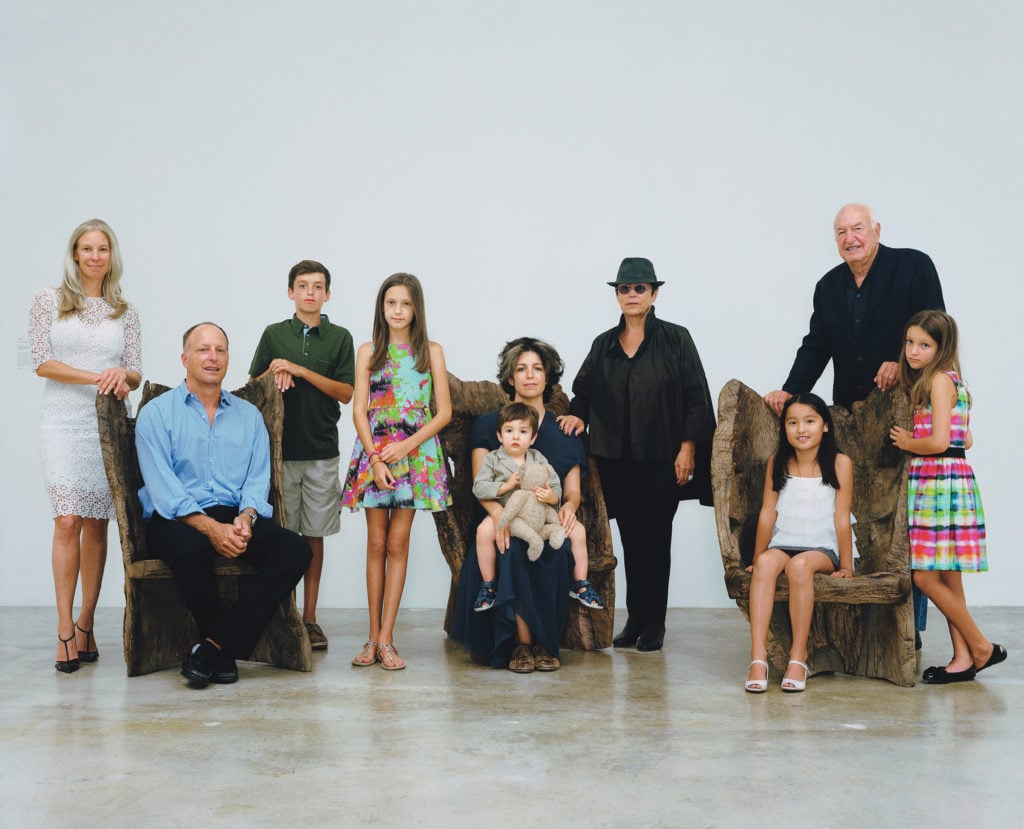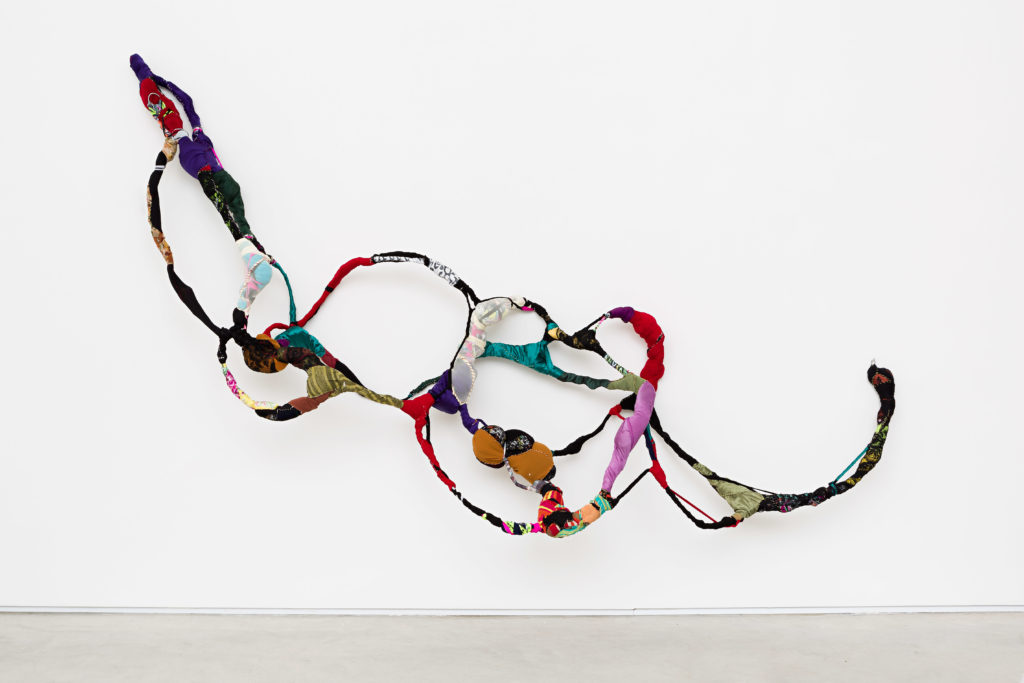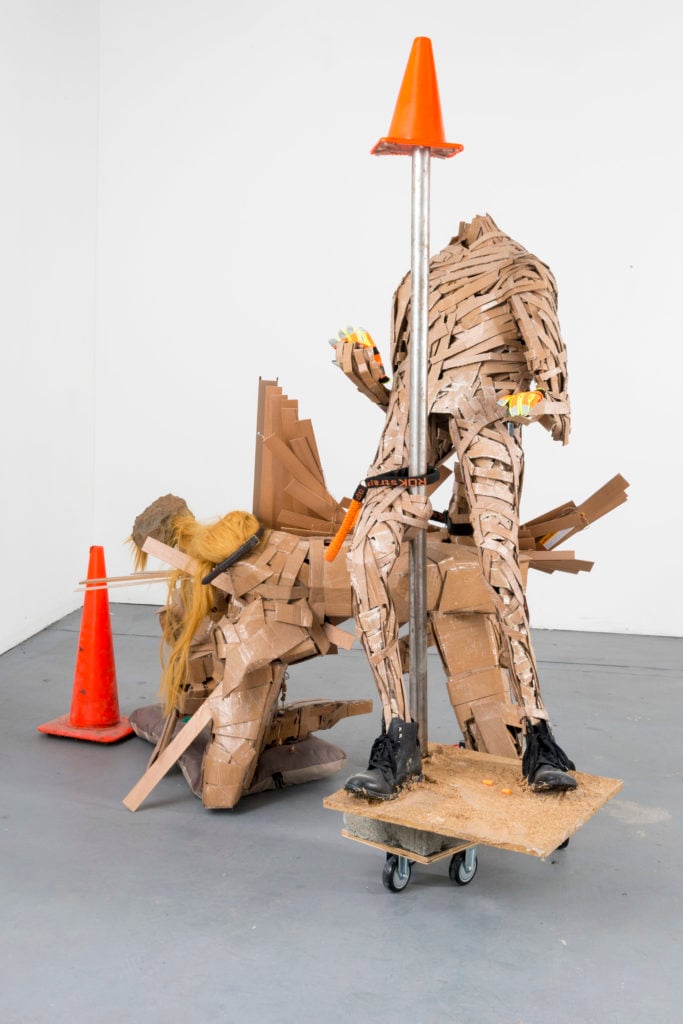People
In Miami, the Rubell Family Talks New Exhibitions, Forthcoming 100,000-Square-Foot Museum
The pioneering couple discuss their plans for creative life in South Florida.

The pioneering couple discuss their plans for creative life in South Florida.

Laura van Straaten

This year during Miami’s art week, the artwork newly on view at the Rubell Family Collection’s first bifurcated exhibition in many years—with contemporary Brazilian art on the ground floor and recently acquired artworks that take on various forms of social anxiety on the upper level—may be upstaged by the museum itself. Though known by insiders for many months, on Monday the New York Times announced the Rubells’s plans to expand the museum in 2018 into a far larger campus that is being adapted for the museum’s use by the art world’s favorite architect: Annabelle Selldorf. The campus will be in a nearby Miami neighborhood called Allapattah, which is north of Little Havana and west of the Wynwood Art District.
Seated in the library of the museum they established for their collection more than 23 years ago, the family’s matriarch and patriarch, Mera and Don Rubell, discussed their two new exhibits—opening to the public Wednesday—and their big expansion plans.
Downstairs, the exhibition “New Shamans/Novos Xamãs: Brazilian Artists” includes wall texts with complete translations in Portuguese. The first room dedicated to video art is part of “Video Art in Latin America,” a project of the Getty Research Institute’s Pacific Standard Time: LA/LA, a collaboration of arts institutions across Southern California that will present these works along with more than 70 exhibitions focused on Latin American and Latino art next fall at LAXART.
The other rooms include recently acquired sculpture and paintings from Brazilian artists who often take a political stance in their work. “It was a number of trips to Brazil where we tried to avoid the typical South American geometric abstraction or kind of strange conceptual art,” explains Don. “We tried to find what people were doing who were really involved with the major issues of Brazil, and far and away the biggest issues in Brazil—like in the US—[are] race relations and women’s rights.”

Left to right: Don, Jennifer, Mera and Jason Rubell. Photo courtesy of the Rubell Family Collection.
The sculpture Born in America (2015) made of looping skeins of textiles by Sonia Gomes—whose work is everywhere in Brazil and deserves to be better known in the US—was also part of “No Man’s Land,” last year’s exhibit of all women artists at the Collection.
Meanwhile, upstairs, the finishing touches were being put on “High Anxiety: New Acquisitions,” which presents selections acquired in the last two years of artworks from 32 artists, many of whom explore polarizing social and political concerns using a diverse array of contemporary artistic practices. The show purports to reveal a “shared state of uncertainty, nervousness and pessimism,” according to the family.
How related are the title and the topic to the recent US elections? “We came on this title a year ago,” Mera explains.
“It’s been a year of huge anxiety. We were feeling it—I was even having nightmares.” Don interjects, “Our objective was not to do a political show.” They consult for a moment and Mera summarizes: “I think it demonstrates that a lot of good art deals with decision-making and challenges facing our own lives and the world, in terms of social justice, climate, sexuality, bigotry, political power.”
Two c-prints will also ring a bell with those who saw last year’s exhibit at Marianne Boesky in New York of work by artist and cult filmmaker John Waters (aka “The Pope of Trash”). First, there’s Brainiac (2014), which mocks up and thus mocks the breathless storytelling of The National Enquirer with prescient fake news stories about “celebrities” like the writers Joan Didion, Philip Roth and Hilton Kramer, and then there’s Beverly Hills John (2012), a self-portrait for which the artist has made his face up as if he has had every possible dermatological and surgical intervention.
Visitors can discover anew the reinstalled piece Solange Pessoa’s Catedral (created over 13 years, from 1990–2003), which debuted at the Collection this time last year. Speaking to artnet then, through a translator, Pessoa described the snaking, monolithic colossus crafted of human hair as filled with “symbolic density”:
“The work has to do with the baroque but it includes animals, actions, performances, video, and other things. I feel the work connects to Ana Mendieta, Robert Morris, and Eva Hesse. …The Rubells were, I think, surprised by the physicality of the work when they came to see my studio in Belo Horizonte [Brazil].”
The sculpture, now in a room of its own on the upper floor, may evoke for some the imagined figure of Mr. Snuffleupagus, but it is no less powerful because of it.
Other sculptures, including Walk Barfy Dog Box (2014) and Summer Law (2013) by Ryan Trecartin and his partner-in-crime Lizzie Fitch, best known for video work, are a treat; one imagines the duo trawling for materials at Home Depot and the local sporting goods store. Between the two sculptures, which resemble the abandoned jumble found in many an episode of “Storage Wars,” materials include: bungee cord, cap, double-sided tape, elbow pads, epoxy, exercise cones, traffic cones, glow-in-the-dark ball, foam ball, other balls, ink, knee pads, leggings, life jackets, mesh net, metal clamps, MSR fuel bottle, paper, pillows, plant caddie, plastic, plastic clamps, red Solo cup, screws, socks, step ladder, sun hat, tennis balls, yoga mat, zip ties, balls, belt, blinds, boots, cardboard, cement, contact cement, dog bed, dog collar, dog leash, ear plugs, earrings, foam, gel medium, gloves, hair, hair tie, hardware, light stand, MDF, metal pole, sawdust, sawhorse, wheels, and wood. It was funny to see these works during the lunch hour the day before the opening, when a custodial cart filled with florescent light bulbs was parked near them; I found myself looking about for a wall text.
I was drawn to two quieter works from 2014 by new-to-me artist Samuel Levi Jones. His Bad Practice was created on canvas from the skins of medical text books an reddish abstraction that resembles from a distance brick wall. Guilty Pleasures is a similar assemblage using the inner covers of vintage encyclopedias. Don Rubell likens the artist’s sensibility to Glenn Ligon and notes, not without admiration, a “certain degree of hostility” in the works.

Sonia Gomes, ‘Untitled’ from the Twisting Series, 2015. Photo courtesy of the Rubell Family Collection.
A crowd-pleaser is sure to be a fragile interactive sculpture of a chubby, life-sized infant entitled Glass Baby (2015) by Jennifer Rubell (Mera and Don’s daughter) that is heavier than you’d think. Visitors will be encouraged to hold and pass the glass baby to one another, as if it were a real child. “I looked at the piece against after the elections and I felt it captures this feeling of taking the country and passing it along “ Jennifer explained in a short interview. “And it made me cry thinking of the trust. You are banking on the humanity of the person you’re giving it to.”
Also on the subtler side are a half-dozen somber paintings by Jesse Mockrin. In fact, paintings (maybe abstract) get a lot of play in this show, with multiple works from a diverse cadre of male artists: Cy Gavin, Paul Kneale, Calvin Marcus, Harold Ancart, Aaron Fowler, John Williams, Michael Williams and Torey Thornton.
The Rubells practically competed to champion Gavin, a young artist whom they met just as he was finishing his MFA at Columbia University and about to lose his studio space. They invited Gavin to take up residency in one warren of rooms in the structure that will within two years house their new museum.
“He had 25,000 square feet and he bought himself a skateboard to get around the building,” Mera said. “He’s someone with a lot of talent—he can paint, sing, do video, installation,” she adds. Sounds a little like early Basquiat? “Exactly!” she says.
“While in residence, the artist created 12 paintings,” says Don, “on a scale that he has never contemplated before.”
The three paintings of Gavin’s now on view are in the same vein as work from the artist’s first solo show in New York last year, which was well-reviewed by the New York Times.
Throughout their interview, the Rubells could hardly contain their excitement about the new museum, hopping up frequently to showcase the sprawling table-top model from Selldorf Architects, which has been hired to realize the Rubells’s dreams of a 2.5-acre campus out of a former food distribution center the couple discovered while scouting warehouses for art storage. “What we came across was too fantastic to pass up as an expanded exhibition space,” says Mera.
As family members and longtime museum director Juan Roselione-Valadez joined them to play at rearranging dollhouse-sized images of some of the more the 7,000 artworks in the collection, folks like David Maupin of Lehmann Maupin and his husband Stefano Tonchi, editor in chief of W, popped in for a peek and to offer congratulations.

Ryan Trecartin; Lizzie Fitch, ‘Walk Barfy Dog Box,’ 2014. Courtesy of the Rubell Family Collection.
The Rubells plan to put their current 40,000-square-foot building—formerly DEA warehouse for confiscated goods—on the market to raise money for the future space. Their sincere hope is that another cultural institution will take up residence now that Wynwood is firmly established as a hip center of creative life in South Florida, in large part thanks to the pioneering couple.
The new neighborhood, a 10-minute drive from the current space, is unknown to the art world. “It’s an industrial neighborhood but two blocks from the metro,” says Mera, explaining that because deepening the Collection’s commitment to art education and to engagement with the public is a key part of the mission for the new campus, that metro stop is critical.
The Rubell family hopes, in turn, that their future museum will jump-start rejuvenation in area when it opens in 2018. In the meantime, visitors from around the globe who flock to the Rubells’s collection every year during the Miami fairs will have a whole two years to learn how to pronounce “Allapattah.”